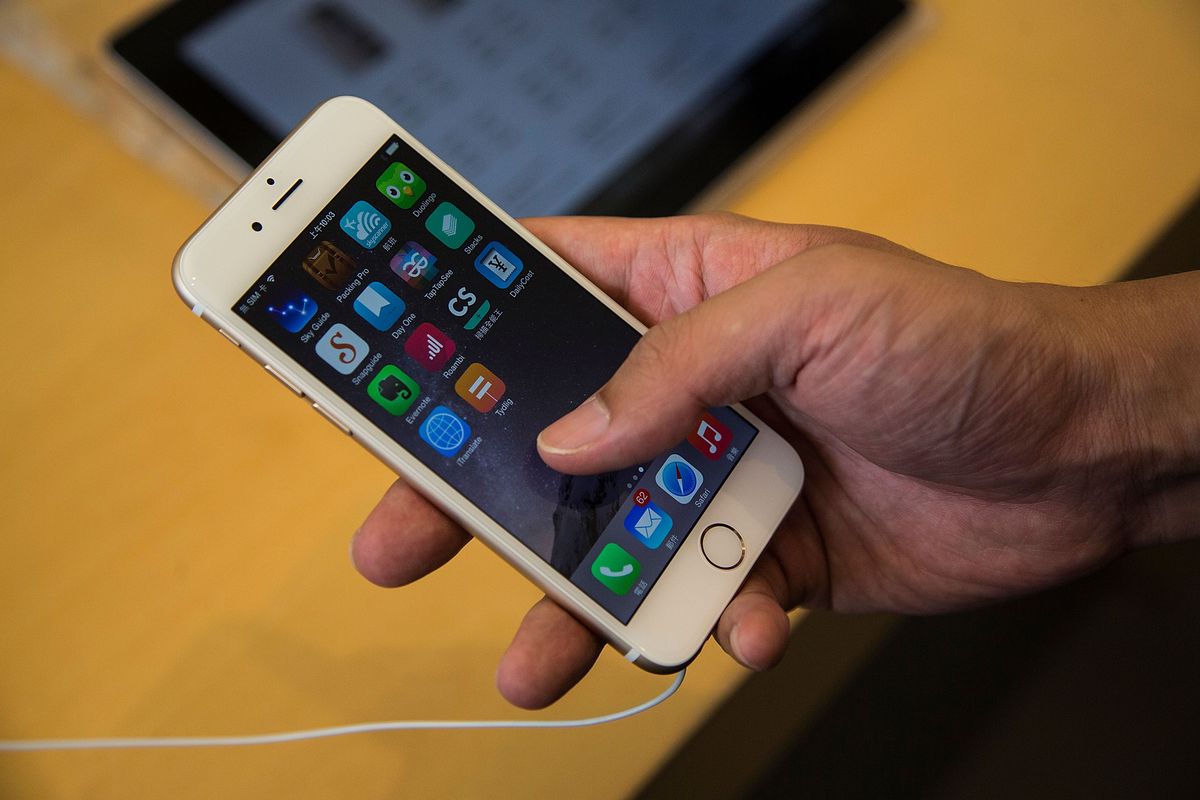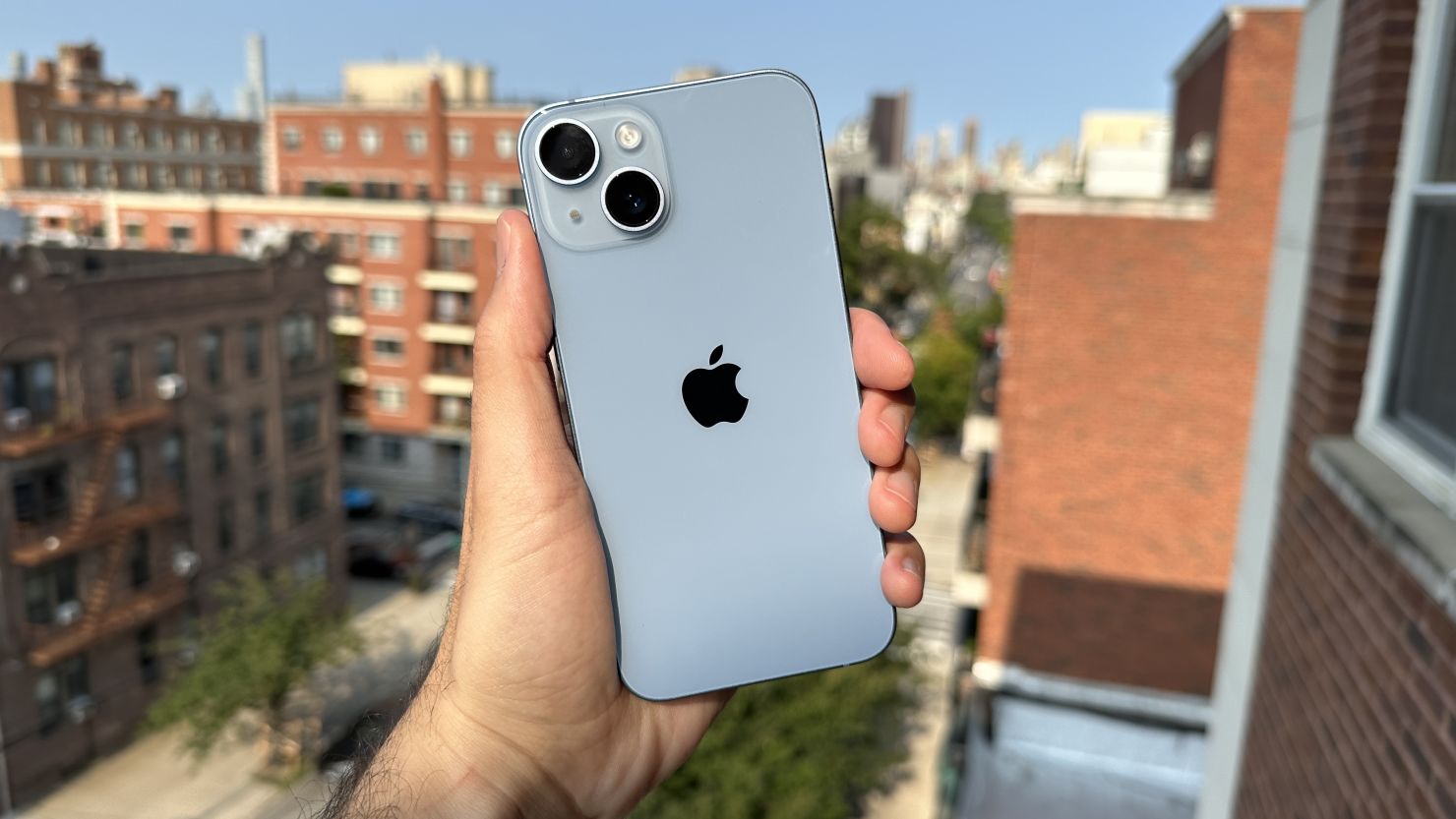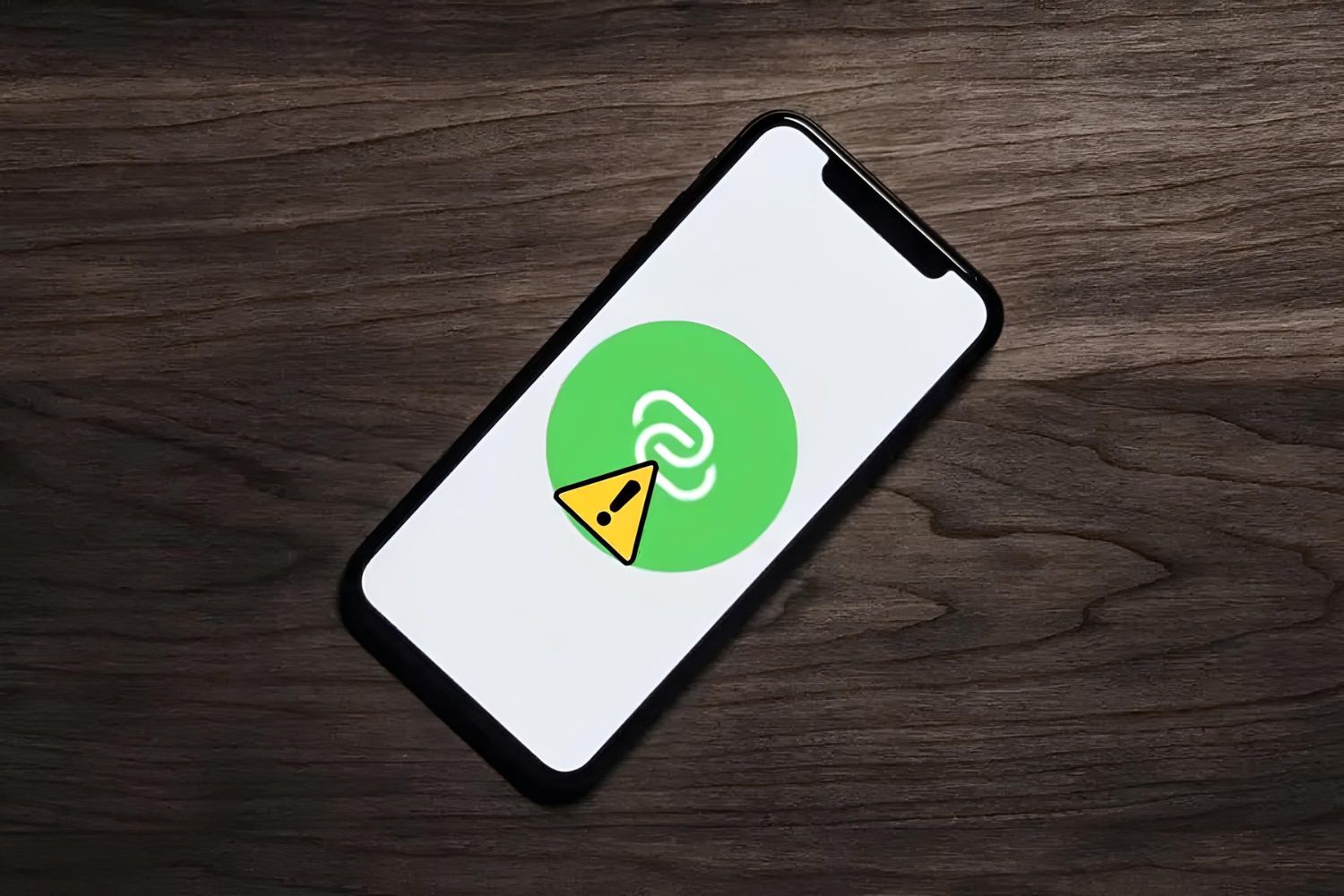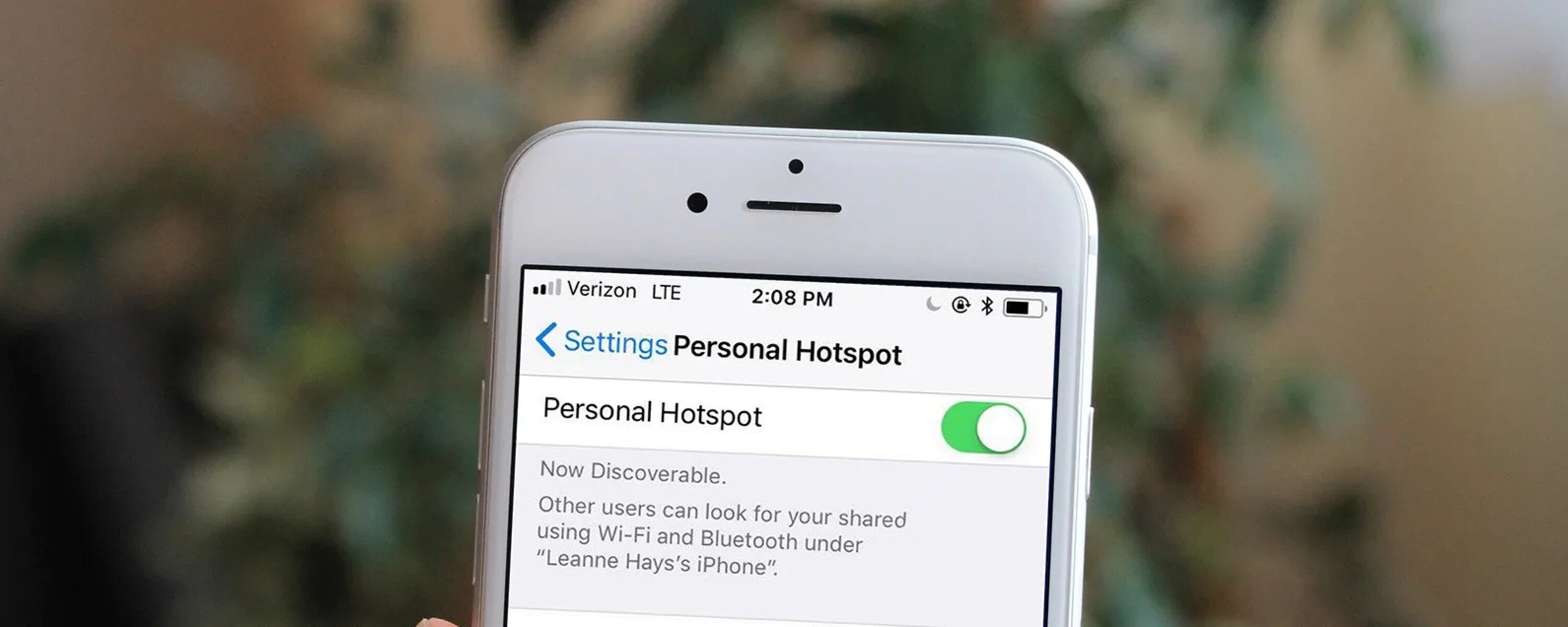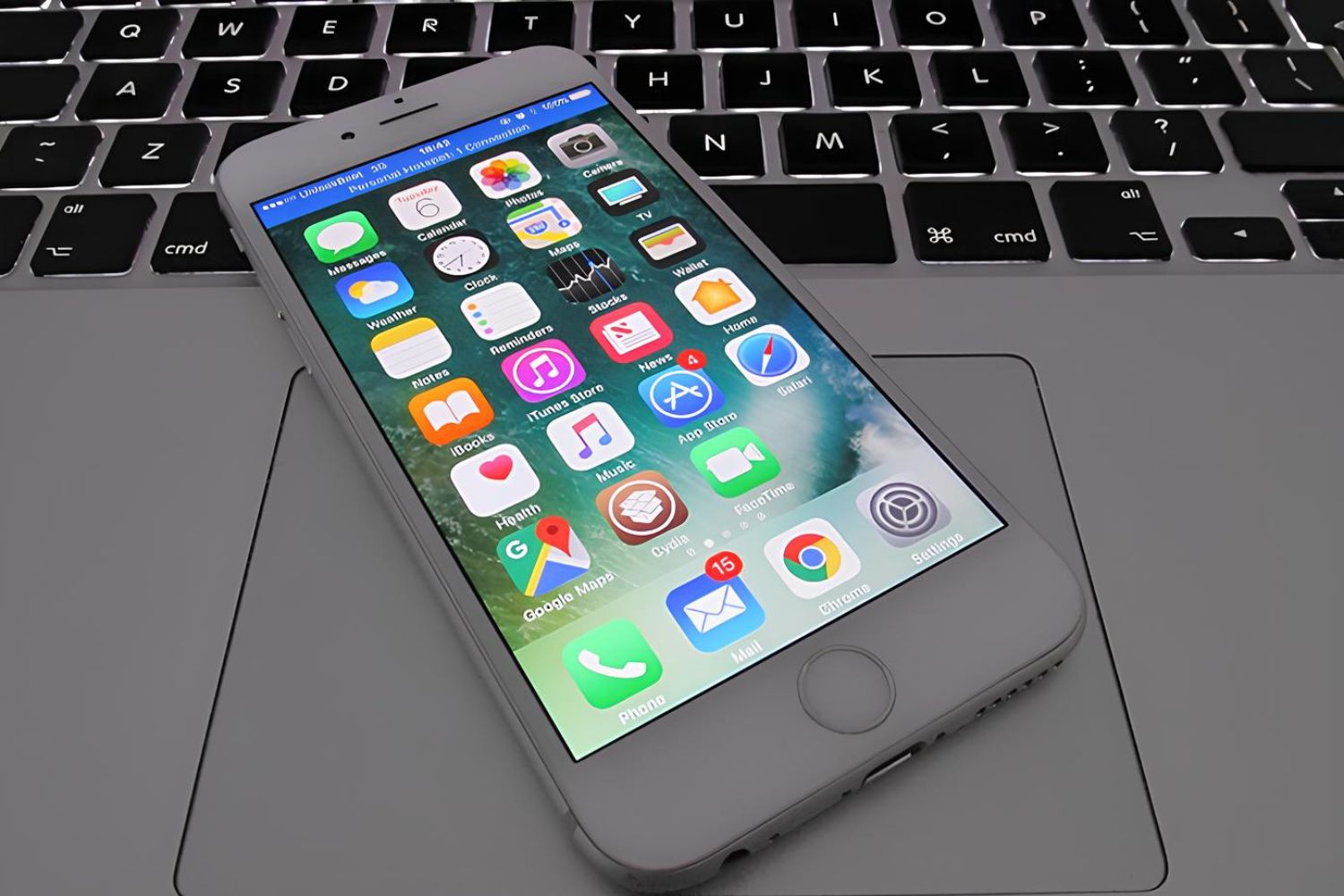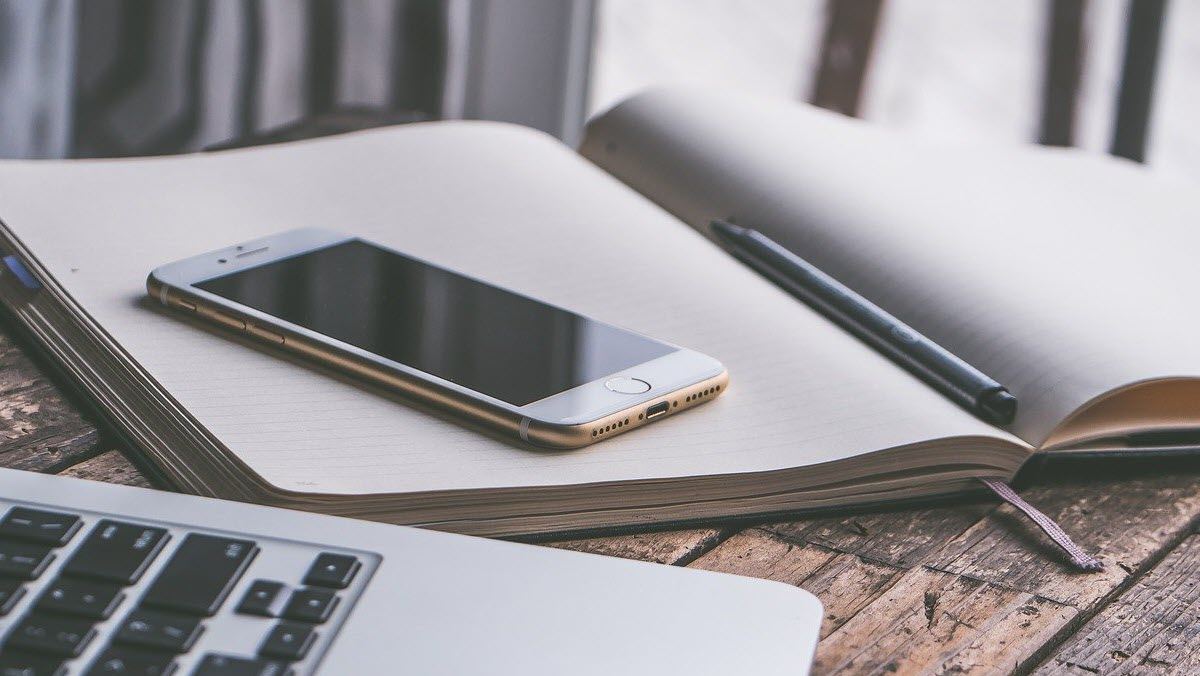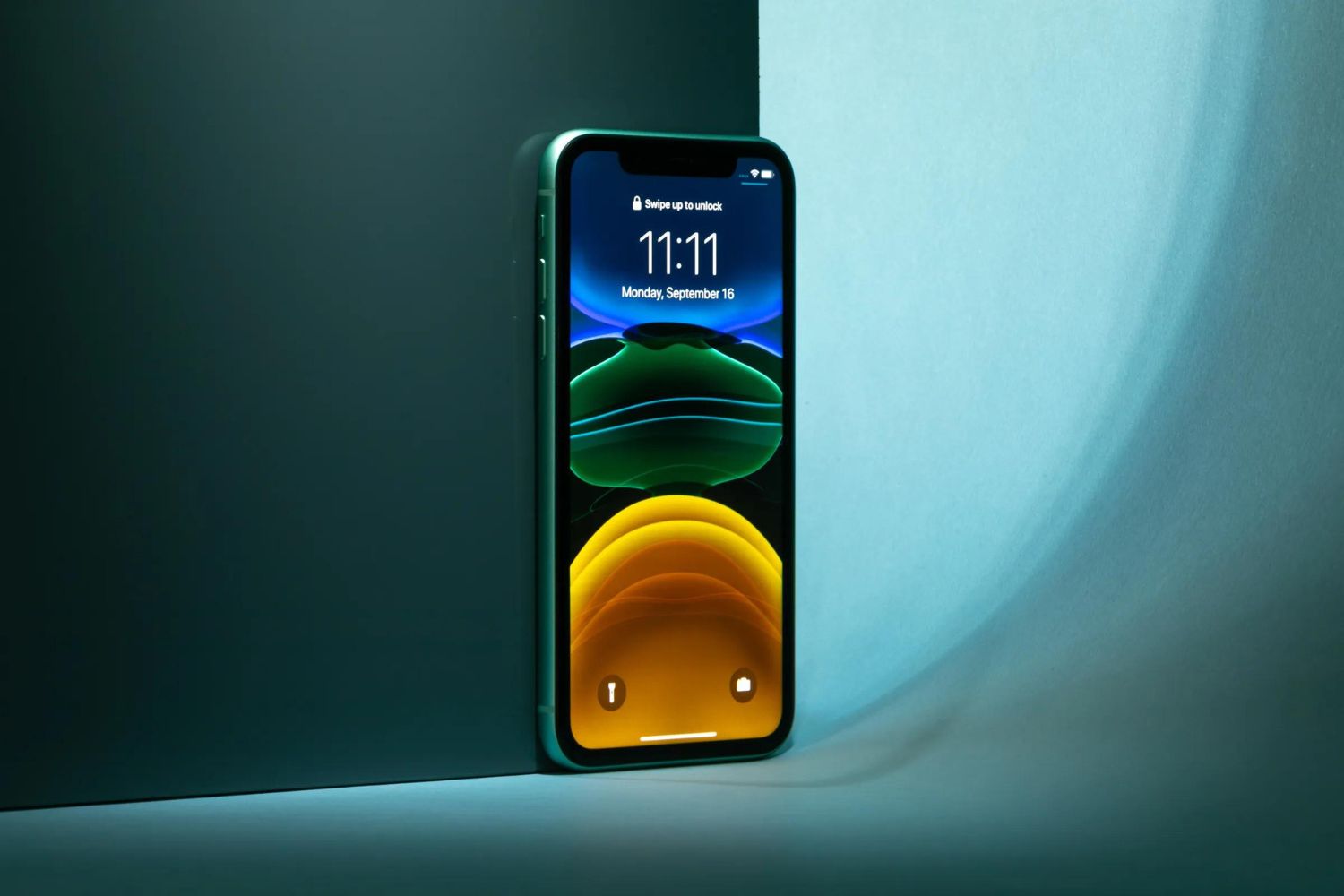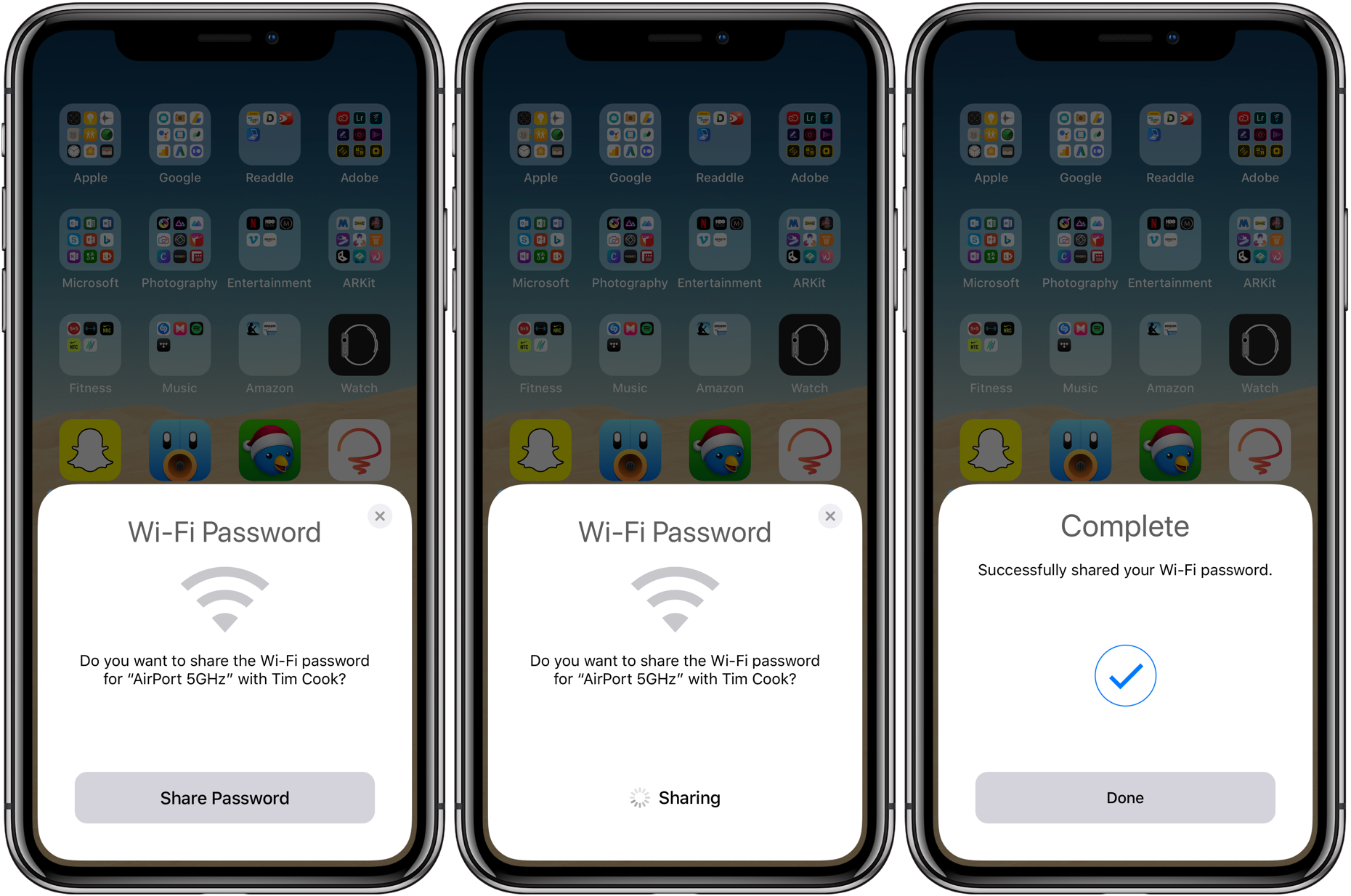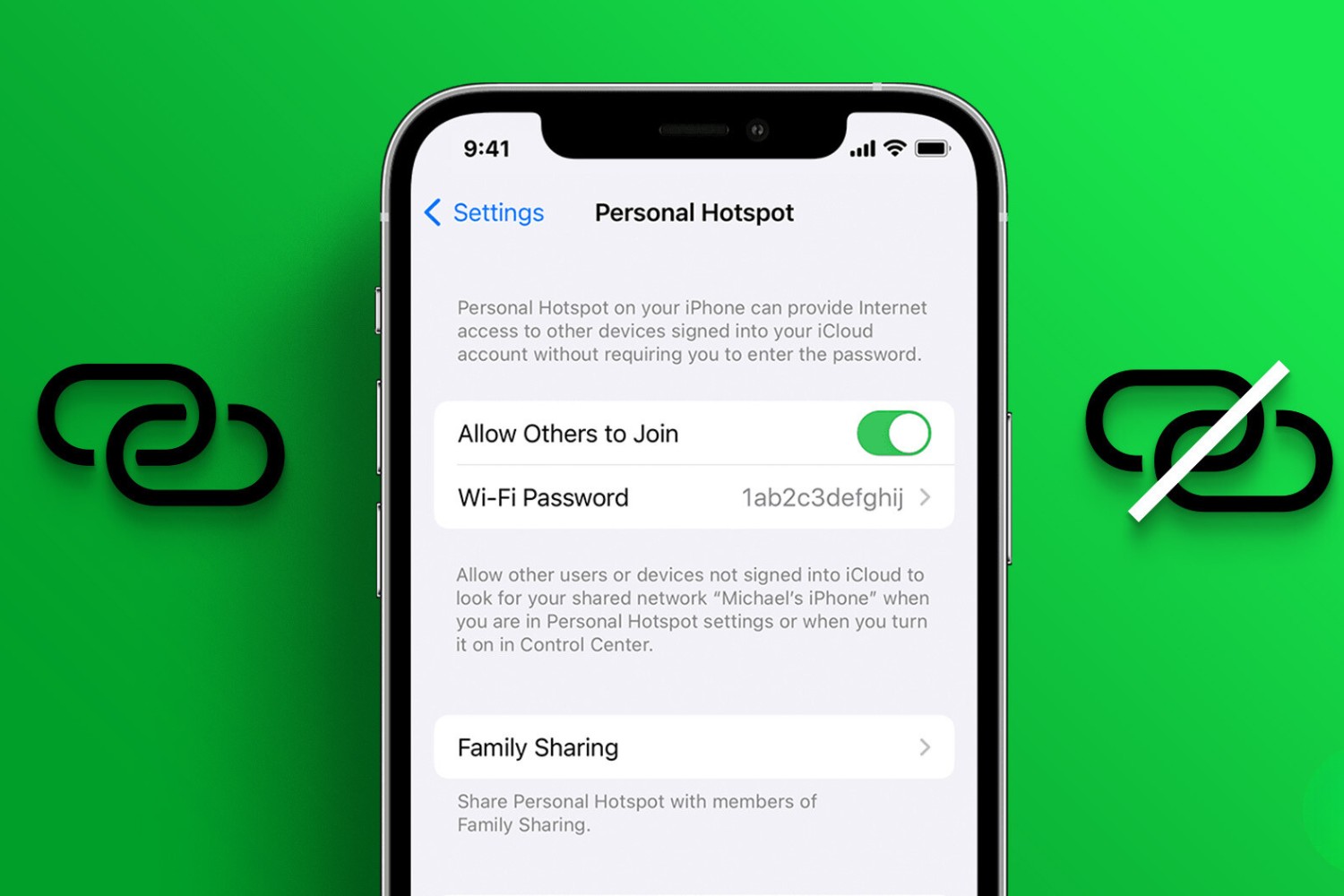Introduction
In today's fast-paced world, staying connected is more important than ever. Whether you're traveling, working remotely, or simply in need of a reliable internet connection, turning your iPhone into a hotspot can be a game-changer. By leveraging your iPhone's Personal Hotspot feature, you can share your cellular data connection with other devices, such as laptops, tablets, or other smartphones, seamlessly transforming it into a portable Wi-Fi hub.
This step-by-step guide will walk you through the process of enabling the Personal Hotspot feature on your iPhone, specifically on the AT&T network. From checking your eligibility to troubleshooting common issues, we've got you covered. By the end of this guide, you'll have a comprehensive understanding of how to harness the power of your iPhone to create a reliable and secure Wi-Fi hotspot, ensuring that you stay connected wherever you go.
So, whether you're a digital nomad, a remote worker, or simply someone who values the convenience of having a backup internet connection, learning how to turn your iPhone into a hotspot on the AT&T network is a valuable skill. Let's dive in and unlock the full potential of your iPhone's connectivity capabilities.
Checking your eligibility
Before diving into the process of turning your iPhone into a hotspot on the AT&T network, it's crucial to ensure that your cellular plan supports this feature. The ability to use your iPhone as a hotspot depends on your specific plan and carrier restrictions. Here's how you can check your eligibility:
-
Review your cellular plan: Start by reviewing the details of your AT&T cellular plan. Access your account through the AT&T website or mobile app to view the features included in your plan. Look for any specific mentions of hotspot or tethering capabilities.
-
Contact AT&T customer support: If you're uncertain about your plan's hotspot eligibility, it's best to reach out to AT&T's customer support. You can contact them via phone, online chat, or visit a local AT&T store for assistance. Provide your account details and inquire about the hotspot feature to get a clear understanding of your plan's capabilities.
-
Check your device settings: On your iPhone, navigate to the Settings app and look for the "Personal Hotspot" option. If you can access this feature and configure it, it's a positive indication that your plan supports hotspot functionality. However, attempting to enable the hotspot without the appropriate plan may prompt a message to contact your carrier to add the feature to your plan.
-
Review plan documentation: If you have the original documentation or contract for your AT&T plan, review it for details regarding hotspot or tethering. Often, carriers outline specific features and limitations in their plan documentation, providing clarity on whether hotspot functionality is included.
-
Explore plan upgrades: If your current plan doesn't include hotspot capabilities, consider exploring the possibility of upgrading to a plan that offers this feature. AT&T may have alternative plans that cater to your connectivity needs, providing the ability to use your iPhone as a hotspot.
By thoroughly examining these avenues, you can determine whether your AT&T cellular plan supports the Personal Hotspot feature. It's essential to have a clear understanding of your eligibility before proceeding to enable the hotspot on your iPhone, ensuring a seamless and frustration-free experience.
Enabling Personal Hotspot on your iPhone
Enabling the Personal Hotspot feature on your iPhone empowers you to share your cellular data connection with other devices, creating a convenient Wi-Fi hotspot on the go. If you've verified your eligibility and confirmed that your AT&T cellular plan supports hotspot functionality, you're ready to proceed with activating the Personal Hotspot on your iPhone. Here's a comprehensive, step-by-step guide to help you seamlessly enable this feature:
-
Accessing Settings: Begin by unlocking your iPhone and navigating to the "Settings" app. The Settings icon resembles a gear and is typically located on your home screen. Tap on it to access the device's settings.
-
Selecting Personal Hotspot: Within the Settings menu, scroll down and locate the "Personal Hotspot" option. It's usually positioned below the "Cellular" and "Wi-Fi" settings. Tap on "Personal Hotspot" to access its configuration.
-
Enabling Personal Hotspot: On the Personal Hotspot screen, you'll find a toggle switch at the top. By default, it may be in the "Off" position. Simply tap the toggle switch to turn on the Personal Hotspot feature. As you do this, your iPhone will begin broadcasting a Wi-Fi signal that other devices can connect to.
-
Configuring Hotspot Settings: After enabling the Personal Hotspot, you have the option to configure its settings. You can set a Wi-Fi password to secure the hotspot and restrict access to authorized devices. Tap on "Wi-Fi Password" to create a custom password for your hotspot, enhancing its security.
-
Connecting Devices: Once your iPhone's Personal Hotspot is active, other devices can connect to it just like they would to any other Wi-Fi network. On the device you wish to connect, navigate to the Wi-Fi settings and select your iPhone's hotspot from the list of available networks. Enter the Wi-Fi password you set in the previous step, and the device will establish a connection with your iPhone.
-
Monitoring Hotspot Usage: As you share your iPhone's cellular data through the Personal Hotspot, it's important to monitor its usage to avoid exceeding your data limits. You can track hotspot data usage by returning to the "Personal Hotspot" settings on your iPhone. Here, you'll find information about connected devices and the amount of data consumed through the hotspot.
By following these steps, you can effectively enable the Personal Hotspot feature on your iPhone, transforming it into a reliable Wi-Fi hotspot for your other devices. Whether you're working from a remote location, traveling, or simply in need of a backup internet connection, harnessing the power of your iPhone's hotspot capabilities ensures that you stay connected wherever you go.
Connecting devices to your iPhone hotspot
Once you have successfully enabled the Personal Hotspot feature on your iPhone, the next step is to connect other devices to it. Whether you need internet access for your laptop, tablet, or another smartphone, connecting to your iPhone's hotspot is a straightforward process.
Here's a detailed guide on how to connect devices to your iPhone hotspot:
-
Accessing Wi-Fi Settings: On the device you want to connect to your iPhone's hotspot, navigate to the Wi-Fi settings. This can usually be found in the device's settings menu or through a quick access icon in the control center.
-
Selecting Your iPhone's Hotspot: In the list of available Wi-Fi networks, you should see your iPhone's hotspot listed. It typically appears as "[Your iPhone's Name]". Tap on your iPhone's hotspot to initiate the connection process.
-
Enter Wi-Fi Password: If you've set a custom Wi-Fi password for your iPhone's hotspot during the configuration process, you'll be prompted to enter it when connecting a new device. Input the password and proceed to join the network.
-
Establishing Connection: Once the correct password is entered, the device will proceed to establish a connection with your iPhone's hotspot. You may see a loading icon or a message indicating that the device is connecting to the network.
-
Confirmation: Upon successful connection, your device will display a Wi-Fi symbol in the status bar or Wi-Fi indicator, signifying that it is now connected to your iPhone's hotspot. You should now have internet access on the connected device, utilizing your iPhone's cellular data connection.
It's important to note that the number of devices that can connect to your iPhone's hotspot simultaneously may be limited based on your carrier and plan. Additionally, the data usage of connected devices will contribute to your overall cellular data consumption, so it's advisable to monitor the usage to avoid exceeding your data limits.
By following these steps, you can seamlessly connect your various devices to your iPhone's hotspot, ensuring that you have access to a reliable internet connection wherever you go. Whether you're working on a project, streaming content, or simply staying connected, leveraging your iPhone's hotspot capabilities provides flexibility and convenience in your digital endeavors.
Troubleshooting common issues
Despite the convenience and versatility of using your iPhone as a hotspot, it's not uncommon to encounter occasional issues or challenges. Understanding how to troubleshoot common problems can help you swiftly address any connectivity issues and ensure a seamless hotspot experience. Here are some common issues you may encounter and the corresponding troubleshooting steps:
-
Hotspot not visible: If other devices are unable to detect your iPhone's hotspot in the list of available Wi-Fi networks, start by toggling the Personal Hotspot feature off and then back on in your iPhone's settings. Additionally, ensure that your iPhone's Wi-Fi and Bluetooth are enabled, as these are essential for the hotspot functionality. If the issue persists, consider restarting your iPhone and the device you're attempting to connect.
-
Connection drops frequently: If connected devices experience frequent disconnections from your iPhone's hotspot, verify that your iPhone has a stable cellular signal. Weak cellular reception can lead to intermittent hotspot connectivity issues. Additionally, try moving your iPhone to a different location to improve signal strength. If the problem persists, check for any software updates for your iPhone, as these updates often include improvements to wireless connectivity.
-
Slow hotspot speed: If you notice sluggish internet speeds when using your iPhone's hotspot, consider the number of connected devices and their data usage. Limit the number of connected devices or prioritize essential tasks on one device to alleviate the strain on your cellular data connection. Furthermore, ensure that background app refresh and automatic updates are disabled on connected devices to conserve data and optimize hotspot performance.
-
Authentication or password issues: If devices encounter authentication errors or difficulties entering the Wi-Fi password for your iPhone's hotspot, double-check the password you've set in your hotspot settings. Ensure that the password is entered correctly, taking into account capitalization and special characters. If the issue persists, consider changing the Wi-Fi password on your iPhone to a simpler, easier-to-enter combination.
-
Exceeded data limits: If you receive notifications or alerts about exceeding your cellular data limits, it's crucial to monitor the data usage of connected devices. Encourage users to minimize data-heavy activities, such as streaming high-definition videos or downloading large files, when connected to your iPhone's hotspot. Additionally, consider reviewing your cellular plan to ensure it aligns with your data consumption needs.
By addressing these common issues with practical troubleshooting steps, you can overcome potential obstacles when using your iPhone as a hotspot. These solutions empower you to maintain a reliable and efficient hotspot connection, enabling seamless connectivity for your various devices. Should you encounter persistent or complex issues, reaching out to AT&T's customer support for personalized assistance can further aid in resolving connectivity challenges.
Conclusion
In conclusion, harnessing the power of your iPhone's Personal Hotspot feature on the AT&T network opens up a world of connectivity possibilities. By following the step-by-step guide outlined in this article, you've gained the knowledge and confidence to seamlessly transform your iPhone into a portable Wi-Fi hotspot, enabling you to stay connected wherever you go.
The ability to share your iPhone's cellular data connection with other devices empowers you to work remotely, stream content, attend virtual meetings, or simply browse the web without being tethered to traditional Wi-Fi networks. This newfound flexibility is especially valuable for individuals who are constantly on the move, whether for work, leisure, or daily activities.
Furthermore, the troubleshooting tips provided equip you with the skills to address common hotspot issues, ensuring that any connectivity challenges can be swiftly resolved. By understanding how to troubleshoot issues such as connection drops, slow hotspot speeds, or authentication problems, you can maintain a reliable and efficient hotspot connection, enhancing your overall digital experience.
As technology continues to evolve, the role of our smartphones in facilitating seamless connectivity becomes increasingly vital. The ability to leverage your iPhone as a hotspot exemplifies the convergence of communication and convenience, allowing you to create a personal Wi-Fi hub at a moment's notice.
Whether you're a digital nomad, a remote worker, or simply someone who values the convenience of having a backup internet connection, the knowledge and skills acquired from this guide position you to make the most of your iPhone's connectivity capabilities. Embracing the versatility of your iPhone's hotspot feature ensures that you remain adaptable and connected in an ever-changing digital landscape.
In essence, by mastering the process of turning your iPhone into a hotspot on the AT&T network, you've unlocked a valuable tool that enhances your connectivity, productivity, and overall digital lifestyle. Embrace the freedom of staying connected on your own terms, and let your iPhone's hotspot capabilities empower you in your daily endeavors.







